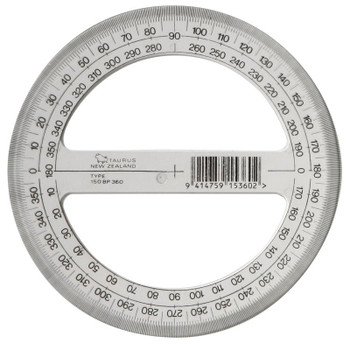


Having a protractor with a straightedge for a base significantly speeds up this step. Now, remove the protractor and connect the dots using a straightedge. It doesn't matter which row you use as long as you always use the same one. Warning! You may see two rows of numbers on your protractor: Do not be alarmed. With your other hand, using a pen or pencil (or something else if you like), make a mark at the center point, the 0° mark, and the mark on the perimeter corresponding to the degree measure you desire. Place the center point of the base of the protractor on this point, and hold it there firmly in place with your less-dexterous hand. To make an angle, select a location on your paper for the vertex of the two lines you are about to create. Making and Measuring Angles with Protractors A protractor can be made from a plethora of materials, including wood, steel, paper or plastic, depending on its intended purpose. Larger protractors tend to have a semicircular hole in the middle for portability and lightness. The base is a straightedge, usually marked in the same fashion as a ruler, measuring distance in millimeters or fractions of inches for your convenience. These markings point radially outward from the center of the base of the protractor, where there is a hole or other space for the placement of a writing implement. The traditional form of protractor is a semicircle with 181 markings on the outer edge, each corresponding to a certain integer degree measure from 0° to 180°. A protractor is a device created in order to divine the degree measure of an angle or to draw an angle with a specific degree measure through the use of a circular measuring scheme.


 0 kommentar(er)
0 kommentar(er)
